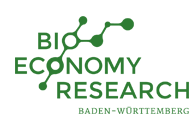Spatial assessment of the organic waste potential from households in Baden-Württemberg

Organic waste can be used as a substrate for material and energy production. As a resource it does not compete with the food industry, yet it is not tapped to its full potential. In 2015 the separate collection of organic waste from households was introduced by law, thus collection is expected to rise. The aim of the state government is to collect at least 60 kg of organic waste from households per inhabitant per year.
The aim of the project is to spatially evaluate the organic waste potential in Baden-Württemberg. A GIS-model allows the identification of organic waste-hot spot locations and the optimization of biomass-based recycling and treatment systems within the Bioeconomy in Baden-Württemberg.
Linking spatial data with waste management data allows the organic waste potentials per area for Baden-Württemberg to be analyzed. The generated database will be a source of knowledge for decision makers, plant owners, and other stakeholders within the Bioeconomy. Organic waste hot spot locations can thus be identified and used for planning and optimizing organic waste treatment plants. Additionally other biomass potentials like forestry or agricultural waste, which are investigated in other projects, can be added and analyzed within one database.
| Project title | Spatial assessment of the organic waste potential from households in Baden-Württemberg |
| Institution | |
| Research group | Prof. Dr.-Ing. Martin Kranert, Detlef Clauß, Lea Böhme |
